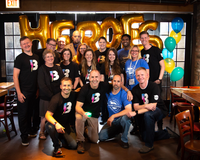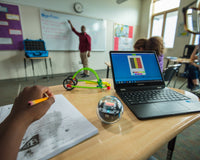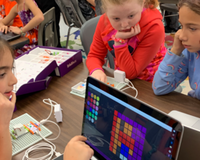Parents and teachers want kids to enjoy and understand a range of subjects, from computer science to music, helping them become well-informed while also developing their growing personalities. That’s why it’s important to expose kids to a variety of ideas, concepts, skills, and subjects from a young age.
While all school subjects are important, those that fall under the umbrella of STEM (Science, technology, engineering, and math) are perhaps the most relevant to the times we live in. Subjects like computing and engineering can require frequent revision due to technological changes. Early introduction to STEM subjects and activities can prepare students for the ever-changing world and workplace.
More kids suffer from early STEM disengagement than you might think. A YouGov study commissioned by littleBits several years ago, found that 62 percent of working adults were not introduced to STEM-related subjects at all in elementary school, and there was significant variation in teaching for those that were. According to the Department of Labor, more than 65 percent of today’s students will grow up having careers that do not even exist yet, therefore, preparing young learners for the future is essential if we want to give them the best chance of a successful STEM career.
This article looks at how early STEM education can benefit elementary school students, engaging their natural curiosity about STEM concepts and sowing the seeds of knowledge that will help them grasp challenging concepts at a later age.
Why STEM Appeals to the Natural Curiosity of Young Kids
Elementary school students can’t design buildings or write their own software… yet. But they do have an instinctive appetite for figuring out how things work. They want to build, explore, take things apart, and put them back together again. In their everyday interactions with the world around them, young learners demonstrate a natural curiosity about the sciences and beyond.
Early STEM education can channel this natural curiosity into learning. For example, a kid’s fondness for building blocks can be more than just a diversion. That determination to build, experiment, and iterate can be the foundation for learning about basic engineering concepts like simple machines. Knowledge informs play, and vice versa, and there are many more examples to be found. A child’s sense of wonderment about the stars and planets can be the springboard for a solar system diorama project in the classroom. Toy cars and iPad games? How about learning to program a four-wheeled robot using colors instead?
Because STEM subjects can appear vocational rather than foundational, they have historically been neglected during early education. But just because these topics are relevant to the modern workplace doesn’t mean they aren’t also exciting, engaging, and naturally appealing to young students.
Building a Strong Foundation for Future Learning with STEM
Some areas of a child’s development follow a more natural progression. For example, a young learner’s ability to read and write is bolstered by basic skills acquired outside the classroom such as knowing the names of objects and being able to describe them. This early stage of language learning is known as emergent literacy. Without it, young kids would have a much harder time learning how to read and write at school.
On the other hand, STEM covers a vast range of concepts, some of which a child would find difficult to explore and develop outside of the classroom. This makes it even more important for educators to lay a strong STEM foundation for young kids that they can build upon when tackling more advanced concepts later on. Of course, the challenge for educators is to find ways to convey STEM knowledge in a way that is accessible to young minds. While books and written exercises are important, this is not the best route for all learners — especially very young ones. In fact, the previously mentioned littleBits study found that the majority of U.S. adults preferred hands-on learning during their early STEM learning.
Hands-on learning doesn’t mean letting students play with blocks all day, although this can still be a constructive activity. Tactile or kinesthetic learning is one of the four learning styles proposed in the “VARK” model, the others being visual, auditory, and reading. Educators may find that offering a balance of the four styles is most beneficial for young learners. Some students gravitate more towards the kinesthetic than others, but all children should experience some form of hands-on learning, especially in activities like science experiments and simple engineering.
Crucially, early STEM education does more than just teach kids the fundamentals of math and science. Collaborative hands-on STEM activities can contribute to children’s social-emotional development, sharpen their critical thinking and problem-solving skills, and help them with other important soft skills like teamwork and leadership. STEM classrooms are also perfect incubators for teaching students 21st Century Skills, including media and technology literacy.
Early STEM Education and Sphero
Early STEM education is hugely important for young kids. Not only do science-related activities appeal to their natural curiosity about how things work, they also help build a foundation for deeper scientific knowledge acquired during middle school, high school, and beyond. Furthermore, early STEM learning — no matter how simple — helps prepare students for future careers in technical disciplines, some of which we can barely yet imagine.
Sphero’s programmable robots are a great way to get kids as young as four years old started with hands-on STEM learning. Our most approachable robot for young learners, the Sphero indi, can be programmed using the Sphero Edu Jr app or used in a fully screen-free mode for hands-on, interactive play.
About the Author
The Sphero Team

The Sphero Team is comprised of current and former educators, education content and curriculum writers, product designers, engineers, executive leadership, and other experts in their fields. Learn more about who we are and what we do at sphero.com/about.










